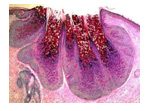Abstract
Wnts are secreted lipid-modified #glycoproteins in most mammalian
genomes. Wnt ligands are the essential components of Wnt signaling
pathways. Before binding to specific receptors, Wnt proteins experienced
post-translational modification of acylation and #N-glycosylation mediated by #acyltransferase porcupine. Mature Wnts are transported from
the Golgi to plasma membrane under association with Wntless. #Retromer complex, P24 and other molecules are all involved in the secretion and
release of Wnts. In this review, we provide an update of the
post-translational modification, secretion and release of Wnts.Wnt proteins are a family of cysteine-rich secreted glycoproteins of
approximately 350-400 amino acids in length [1]. Averagely, Wnts
contains several charged residues and 23 -25 cysteines, some of them are
associated with the formation of inter- and intramolecular #disulfide
bonds that stabilize proper Wnt folding and #multimerization [2,3]. Till
now, 19 mammalian Wnt proteins have been identified to fall into 12
conserved Wnt subfamilies. By binding to 10 different Frizzled receptor
and other co-receptors, Wnt starts its cellular signal transduction. Wnt
signaling transduction is essential in embryonic development, #cell proliferation, cell migration, cell fate specification, and axis
patterning.
For more articles on BJSTR Journal please click on https://biomedres.us/
For more Neuro Imaging Articles on BJSTR
Post-translational modifications and secretion of Wnt proteins by Yanqin Lu in BJSTR



No comments:
Post a Comment
Note: Only a member of this blog may post a comment.